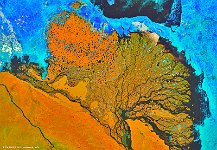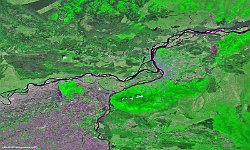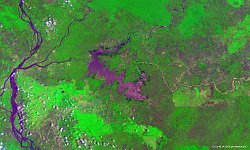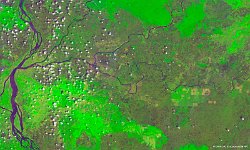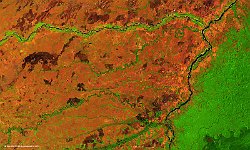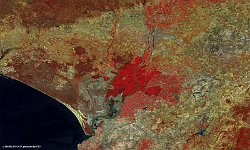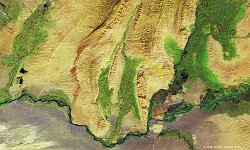1 / 62
Lena Delta, Russian Federation
Where the Lena River, one of Russia’s five longest waterways, flows into the Laptev Sea, it forms a unique delta of three million hectares, 6 500 km river branches, more than 30 000 lakes of varying sizes and over 1 500 islands.
When seen from above, even in this false-colour 100 m image of PROBA-V, the water mosaic is enriched by the brightness of the tundra vegetation cover, a mix of nearly 1 000 species of vascular plants, grass, moss, lichen and algae species. The small larch grove, on one of the southern islands, is considered the northern most forest massif of northeast Eurasia.
The Lena Delta and the Ust-Lensky Reserve, that occupies almost half of the delta, are key for the nesting of migrating birds, like the rare Siberian white crane, and supports mammals like the white whale, polar bears, Arctic fox and wild reindeer.
The mixture of land and water and the richness in fauna and flora, all under conditions of (up to 600 m deep) permafrost and the harsh northern climate, make the Delta a unique Arctic landscape and natural heritage to be preserved.
Date: 16/06/2018
Resolution: 100m
